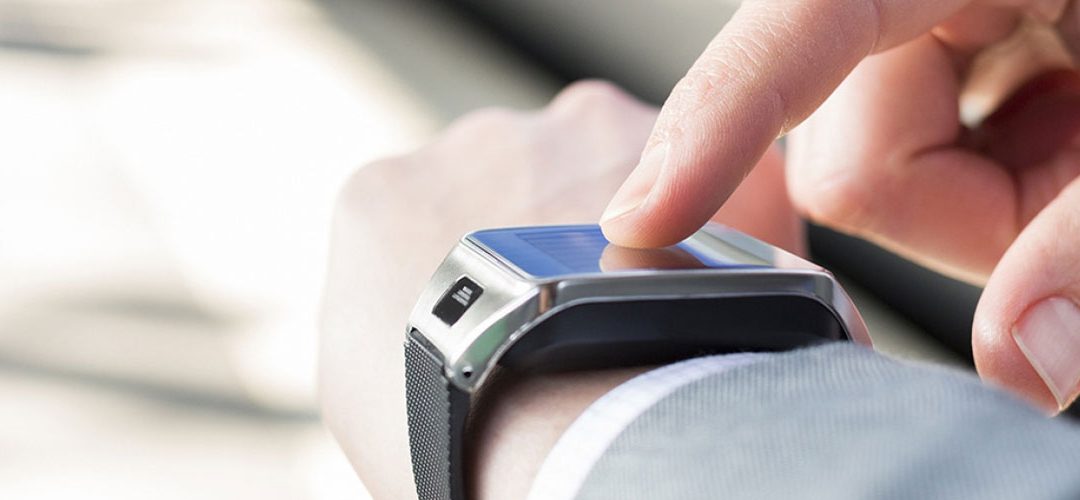
Wearables Will Change the Way You and Your Employees Work
A recent study by SalesForce Research reveals that 79% of respondents believe that wearables are strategic to their organisation’s business success. Have you even considered them an option yet?
Enterprises may still be managing the challenges and opportunities presented by the “Bring Your Own Device” (BYOD) wave, but they should also be preparing for the next “tech” set to transform the internal business landscape: Wearables.
Considered to be the fastest-growing sector, smart watches and wearable devices are set to be the next greatest opportunity (bringing their own unique set of challenges) for businesses to embrace.
You might be thinking that this is probably another “fad” tech that won’t have much impact on your organisation but think again.
A study by Salesforce Research found that 70% of respondents, all business professionals, said wearables will become key to increasing productivity and collaboration, by improving day-to-day processes, while another 86% plan to increase wearable technology spend over the next year.
DID YOU KNOW?
According to a study by The Human Cloud at Work, employees using wearable smart devices are 8.5% more productive and 3.5 % more satisfied with their jobs. Wearable devices also allow for more measurable and effective workplace data.
The SalesForce study also reveals further insights for enterprises considering taking the next step of incorporating wearables in the workplace:
Wearables will be a strategic element of your success
According to the report, enterprises are already embracing “bring your own device” (BYOD) to the workplace, while 54% are also already implementing a BYOW (Wearable) model.
Wearables provide forward-thinking companies with the opportunity to access and harness the essential employee data that these devices generate. This influx of information, “Will shape the business world by creating new technologies, services, and even entirely new industries,” the report indicates.
Top report takeaways:
76% report improvements in business performance since deploying wearables in the enterprise
86% of adopters plan to increase their wearables spend over the next 12 months
Growth in wearables use by enterprises expected within next two year
Employee wearable tech is still in its early stages of adoption, and enterprises are only just considering what role wearables will play in day-to-day employee functions. The report found that companies starting to consider the use of wearables in the organisation are focusing on workplace security access, employee time management and real-time collaboration.
However, as the industry reaches maturity, most companies that participated indicated that they are planning substantial growth in the next two years, and will therefore focus on more employee and customer-centric uses for wearable tech.
Top report takeaways:
One of the major growth areas in wearable adoption centres around improving the user experience.
Use of wearables by customers is currently being led by integration with mobile devices, loyalty programs, point-of-sale applications, and immersive customer experiences.
Wearables will increase the availability of data
Enterprises already decipher a barrage of data accumulated from sales and marketing efforts. Wearables are likely to increase the amount of data that the organisation must analyse, and enterprises will face increasing pressure to capture, analyse, and use this influx of data.
According to the Salesforce Report, “The majority of adopters do not yet feel fully prepared to gain actionable insights from wearable tech. In fact, only 8% of adopters say they are completely ready to gain actionable insights from the volume of employee- and customer-data generated from wearable technology.”
Top report takeaways:
Only 8% of wearable adopters indicate that they are ready to use insights gleaned from wearables.
It is, however, anticipated that as adoption within organisations increases, enterprises will begin using the data more effectively, to make informed, real-time decisions.
As apps grow, adoption will increase
Because it’s still early days for wearables in the workplace, the lack of business applications available makes it difficult for enterprises to implement wearable tech. This is set to change as the wearable tech ecosystem accelerates to include more sophisticated multitasking devices and business apps.
Despite this challenge, enterprises which have not yet incorporated wearables into their strategy are still motivated by the low-cost factor. According to the report: “Twenty-five percent say that they’d be motivated by lower cost and 15% by devices that can better multitask.”
Top report takeaway:
30% of wearable adopters indicate that the lack of business applications is the current challenge when deploying wearables in the enterprise.
On early adopters of wearables in the workplace
Early adopters are already seeing the benefits of implementing wearable devices in the workplace. One such example Tesco, the supermarket chain, which has been using armbands and sensors to automatically track employees and goods in its stores. This has led to an improvement in tracking and finding inventory across hundreds of shelves and dozens of aisles within the stores.
It has also improved efficiencies for workers, who need no longer carry clipboards or manually take notes of what inventory has been pulled. The wearable devices have allowed Tesco to improve business intelligence, enabling supervisors and management to accurately track the flow of inventory, while optimising operations and the supply chain.
App developers are also already trying to solve the primary challenge of access to business apps. For example, US-based Alpine Metrics developed a data analytics app that allows sales professionals to have a quick and easy view of their trending sales, while Vlocity’s app provides sales and service professionals within communications and media companies a way to identify sales opportunities directly from the wearable device.
According to Gartner, in 2014 approximately 10 000 companies globally provided their employees with fitness trackers, with predictions that in 2016/2017 enterprises with more than 500 employees will start offering fitness tracker wearables.
CONSIDER THIS
Enterprises implementing early wearable device programmes are already seeing successes. Early adopters are providing input into business applications and wearable technologies, making them more functional and relevant to the enterprise.
References:
“How smartwatches and wearables are changing the way we work”










